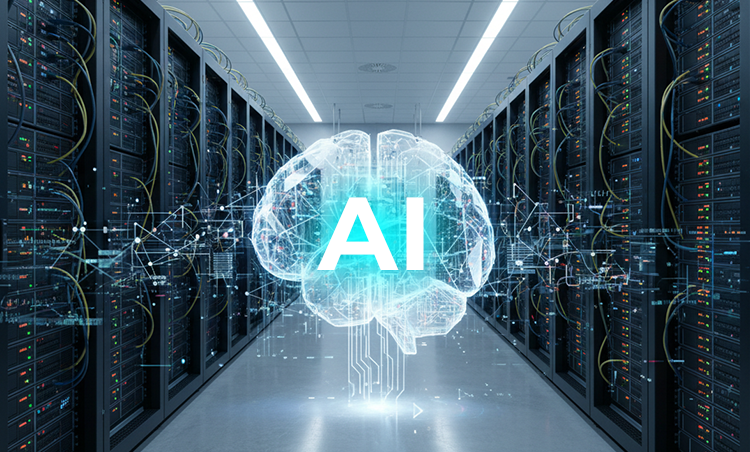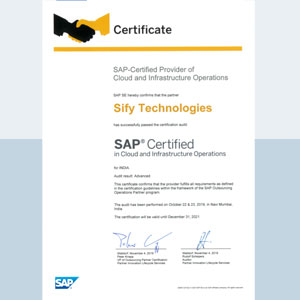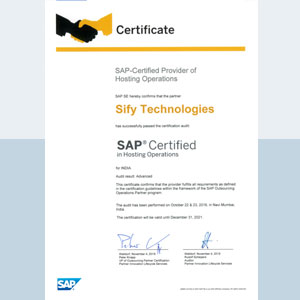Table of contents
Industries are advancing at a rate never seen before due to artificial intelligence (AI). Businesses today are heavily dependent on AI workloads, demanding enormous processing power, lightning-fast networking, and scalable storage, from advanced drug discovery in healthcare to predictive analytics in finance. Efficient data centre capacity management is a key component that underpins these capabilities. When done correctly, it guarantees scalability and smooth operations. Otherwise, it exposes businesses to potential dangers that could impact AI implementation, cause outages, and drive up expenses.
Read about how AI data centers are evolving to power AI workloads, here.
What is Data Center Capacity Management?
Data center capacity management refers to the strategic process of planning, monitoring, and optimizing the available resources. This includes power, cooling, compute, storage, and networking to ensure that a data center can efficiently handle current and future workloads. It involves maintaining the delicate balance between infrastructure supply and business demand, ensuring that no resources are either overused or underutilised.
Effective data center capacity management helps enterprises allocate resources dynamically, scale operations seamlessly, and maintain uptime even as workload intensity fluctuates particularly in today’s AI-first environments where computational demands can spike unexpectedly.
In essence, capacity management ensures that every square foot, kilowatt, and gigabit in a data center is used intelligently. It combines predictive analytics, real-time monitoring, and modular scalability to prevent resource bottlenecks and unnecessary capital expenditure. For AI workloads that may rely on high-density GPU clusters and fast data throughput; capacity management is not just an operational function but a strategic enabler that determines whether an organization can support its AI ambitions efficiently and sustainably.

Why Data Center Capacity Management Matters in the AI Era
Workloads involving AI are resource-hungry along with being data-intensive. Training models require high-density GPU clusters, while real-time inference workloads demand low-latency and consistent network performance. Without strong data center capacity management practices and skills, enterprises struggle to balance power, cooling, storage, and networking requirements.
The difficulty is exacerbated by the unpredictability of AI development. Every few months, models double in size, and businesses frequently underestimate demand. This is where the risks of poor data center capacity planning become clear: either resources are overprovisioned and left idle, or they are under provisioned, causing bottlenecks and outages.
How Ineffective Capacity Management Leads to Data Center Downtime Risks
One of the most detrimental effects of inadequate capacity planning is data center slowing down and even downtime risk. Even a few minutes of disruption can lead to millions of dollars in losses, along with long-lasting reputational harm.
When there is poor data center planning, outages may result from inadequate cooling, overloaded power systems, or network throughput bottlenecks. These risks are heightened in the AI era, where workloads push infrastructure harder than ever before. Overprovisioning resources beyond a certain capacity to prevent outages is also not the optimal solution — it drives up operational costs unnecessarily.
This is where AI-driven data center capacity management makes a critical difference. By leveraging machine learning algorithms, data centers can predict power surges, cooling inefficiencies, and network bottlenecks before they occur. AI continuously analyses patterns in energy consumption, workload distribution, and thermal behaviour, enabling autonomous optimisation of resources in real time. Instead of overprovisioning, an approach that drives up operational costs — AI ensures resources are allocated dynamically based on live demand and predictive insights.
A robust data center infrastructure management (DCIM) system, enhanced with AI capabilities, helps businesses foresee problems and prevent downtime through intelligent automation.
Sify Technologies’ data centers integrate such AI-driven monitoring and predictive analytics to maintain optimal performance. With high redundancy, advanced cooling systems, and real-time capacity orchestration, Sify ensures enterprises stay resilient and operational even under the most demanding AI workloads.

Why Enterprises Struggle to Scale Without Modular Capacity Management
Many organizations still rely on traditional, monolithic capacity management models — building for peak demand or expanding in massive increments. This approach is however not sustainable in the AI era. Workload patterns shift rapidly, and AI adoption often accelerates faster than expected.
Without modular scaling, businesses must wait a long time to expand their infrastructure, which delays AI projects and reduces agility. Modular and pod-based strategies offer flexibility: enterprises can expand capacity in smaller increments, matching real-time demand and avoiding stranded assets.
Modular and built-to-suit data centre solutions from leading data center service providers such as Sify Technologies allow businesses to scale effectively without being locked into inflexible infrastructure models.
How Poor Capacity Management Impacts AI Performance
For AI workloads, poor planning doesn’t always manifest as outright downtime. More often, it results in degraded performance:
- Insufficient compute or storage throughput causing training models to take a lot longer.
- Workloads involving real-time inference end up experiencing latency spikes that may affect user experience.
- When vital tasks are throttled or queued up, inadequate planning results in resource starvation.
Ultimately, the cost of poor capacity management goes beyond immediate financial penalties — it undermines innovation and slows the time-to-market for AI-driven services.
Learn about the future of hyperscale data centers in an AI-centric world, here.
Best Practices for Data Center Capacity Management
By taking a methodical and proactive approach to data center capacity planning, businesses can steer clear of the problems associated with downtime, inefficiency, and exorbitant expenses. These best practices have a direct impact on cost effectiveness, scalability, and resilience; they are not merely operational details.
-
Adopt data-driven forecasting
The cornerstone of efficient data centre capacity management is precise forecasting. Businesses can more accurately predict future requirements by examining past usage, company expansion, and AI adoption patterns. Organizations can predict unexpected spikes in workloads such as model training by utilizing AI-based analytics. Predictive insights are supported by adaptable deployment options when forecasts are connected to infrastructure partners like Sify Technologies’ Data Centers.
-
Leverage DCIM solutions
Modern data center infrastructure management (DCIM) tools integrate power, cooling, network, and IT resources into a unified system. This holistic visibility helps organizations identify inefficiencies, simulate future demands, and reduce data center downtime risks. Enterprises that deploy DCIM solutions alongside partners like Sify Technologies gain the advantage of real-time monitoring and proactive management.
-
Maintain buffer capacity
Running resources at maximum utilization increases the likelihood of outages. Maintaining a buffer in power, cooling, and network capacity safeguards against spikes and reduces the cost of poor capacity management.
-
Implement modular scaling
Expanding in large, inflexible phases can lead to stranded assets. Instead, modular or pod-based scaling aligns investment with real demand. This approach optimizes cost and avoids the pitfalls of poor data center capacity planning.
-
Evaluate advanced cooling technologies
High rack densities are driven by AI workloads, which conventional cooling cannot effectively manage. Investing in direct-to-chip or liquid cooling systems prolongs equipment life and lowers energy consumption.
-
Align IT and facilities teams
Capacity shortages are frequently the result of IT and facilities planning that is not coordinated. Working together, teams can make sure that workload projections align with infrastructure availability. Joint planning cycles and shared KPIs lower risks and boost operational effectiveness.
-
Choose flexible partners
The future is unpredictable, and workloads can change rapidly. Partnering with credible data center service providers that offer adaptable infrastructure is essential. Sify Technologies’ Data Centers deliver scalability, high-density racks, modular expansion, and resilient ecosystems designed for AI. Flexible partnerships reduce exposure to data center downtime risks and ensure enterprises can meet business objectives without interruption.
The Future of AI in Data Center Management
As workloads grow more complex, the role of AI in data center management is set to expand. AI can forecast capacity needs, optimize energy consumption, and even automate workload distribution across facilities. Self-optimizing autonomous systems will become the new standard, reducing manual intervention, and improving resiliency.
The landscape is evolving fast. Some emerging trends to watch:
- Autonomous, AI-driven capacity control
Systems that dynamically shift workloads, shed or ramp resources, and re-balance in real time. - Edge AI and distributed inference nodes
Micro data centers close to users will require precise capacity controls at the edge. - Liquid and immersion cooling proliferation
As rack densities increase, traditional air cooling becomes less viable. - Energy-aware capacity planning
Integrating renewable generation, battery storage, and thermal reuse into the planning loop. - Sustainability metrics and carbon budgets
Data centers will be scored not just on efficiency, but on environmental impact.
Sify, for instance, is already moving in this direction by integrating AI-driven monitoring and predictive analytics into its data center operations, ensuring enterprises stay ahead of demand curves.
In the AI era, data center capacity management is not just about balancing supply and demand — it is a strategic necessity. The consequences of poor planning include downtime, performance bottlenecks, wasted capital, and reduced competitiveness. By embracing modular strategies, leveraging DCIM tools, and partnering with providers like Sify Technologies’ Data Centers, enterprises can mitigate risks, optimize costs, and unlock the full potential of AI. Speak to our experts today to learn more.























































